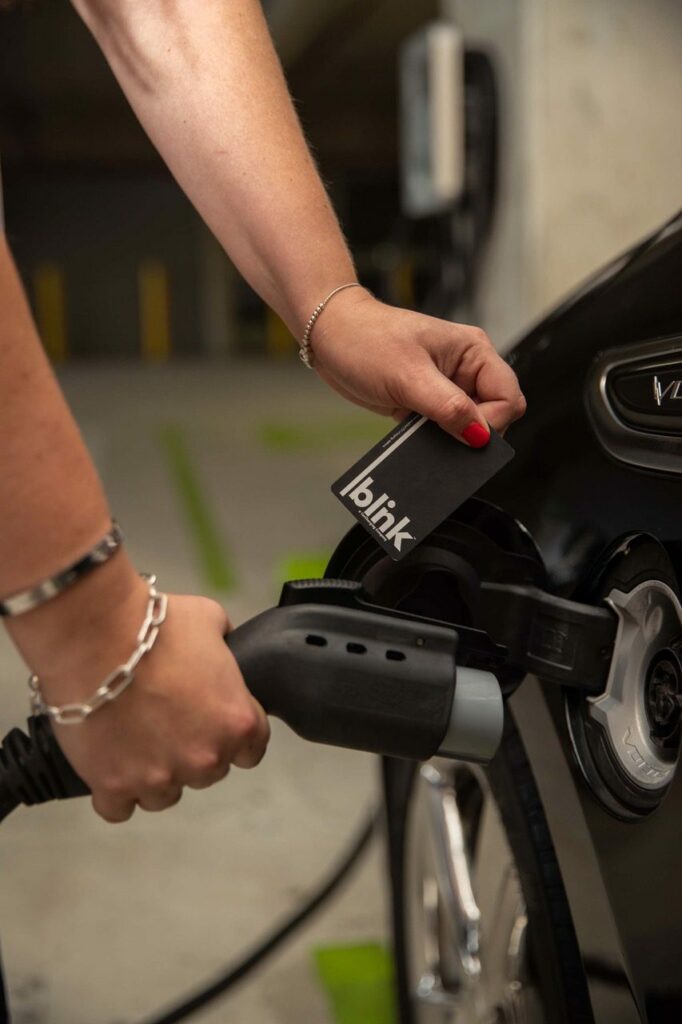By Riley Kaminer
While 2,500 Aspen Ideas: Climate participants mulled about the Miami Beach Convention Center in early March, little did they know that there was top-tier environmental entrepreneurship happening at a global scale just a five minute walk away.
Miami Beach is the home to Blink Charging, a publicly-traded firm that is one of the largest EV charging companies in the US. It’s also the first and only vertically integrated EV charging company: meaning they design, manufacture, deploy, and operate charging stations around the US.
Blink Charging’s headcount is deep into the 600s, with a team of 54 based out of its Lincoln Road offices. That’s a massive expansion from the team of 130 Blink had when Refresh Miami caught up with them just one year ago. Since then, the company acquired EV charging provider SemaConnect for $200M – significantly bolstering their headcount.
Setting the growth aside for a moment: Let’s not forget though that at one point, Blink Charging was a Miami tech startup.

“People used to throw me out of their offices and now they welcome me,” founder and CEO Michael D. Farkas told Refresh Miami back then, underscoring the change in perception about electric vehicle charging. “People used to ask me if I was a crackpot, and now they think I’m a prophet.”
When we caught up with Farkas during Aspen Ideas: Climate, he was pleased to report that this growth trajectory is continuing, if not accelerating. He noted that Blink Charging recently won a contract with the U.S. Post Office, which begins with an order of 14,000 charging stations. “And that’s only phase one,” Farkas said, signaling an increased partnership to come.
What factors have contributed to this growth? Farkas pointed to the vertically integrated nature of the company as a major advantage.
“The difference between us and all the other customers is that we’re not pitching a specific service that we supply,” he explained. “We actually talk to the property owner and come up with a model that works for them.” Blink Charging sells the equipment, provides the networking services, deploys a cloud platform – essentially providing turnkey service.
Manufacturing and operating their own chargers also gives Blink Charging a major leg up, Farkas explained. “There’s not one other manufacturer in the United States that owns and operates equipment that’s in the field. That allows us to gather all the data, all the experiences from site acquisition, site evaluation, installation of the hardware, maintaining and operating that hardware, and dealing with the property owner and the consumers paying for electricity.”
Ultimately, Blink Charging feeds these data points into their design process to create the best product for its consumers. “We’ve been very successful because we make a much better piece of equipment,” asserted Farkas. “We produce our hardware for us to sell energy, not to sell the hardware.”
Farkas noted that EV adoption continues to outpace the construction of charging infrastructure. Overall, he remains optimistic about the outlook of the EV space, and the positive environmental benefits that it can bring.
“When I started this company 15 years ago, there were discussions about the environment. But nowhere near as many as they are today. No one knew how impactful things [like auto emissions] were – nowhere near as much as today. This is impactful. This is going to change people’s lives.”

READ MORE ON REFRESH MIAMI:
- Blink Charging acquires EV charging provider SemaConnect for $200M
- Miami is home to one of the top companies powering the EV revolution
- At global Aspen Ideas conference, tech touted as solution to our climate woes
- DigiBuild sets sight on global expansion, growth of construction procurement platform - April 24, 2024
- The hottest technology in Miami? Exowatt raises $20M, launches renewable energy solution - April 22, 2024
- This Earth Day, let’s shine a spotlight onSouth Florida innovators building a greener world - April 22, 2024





